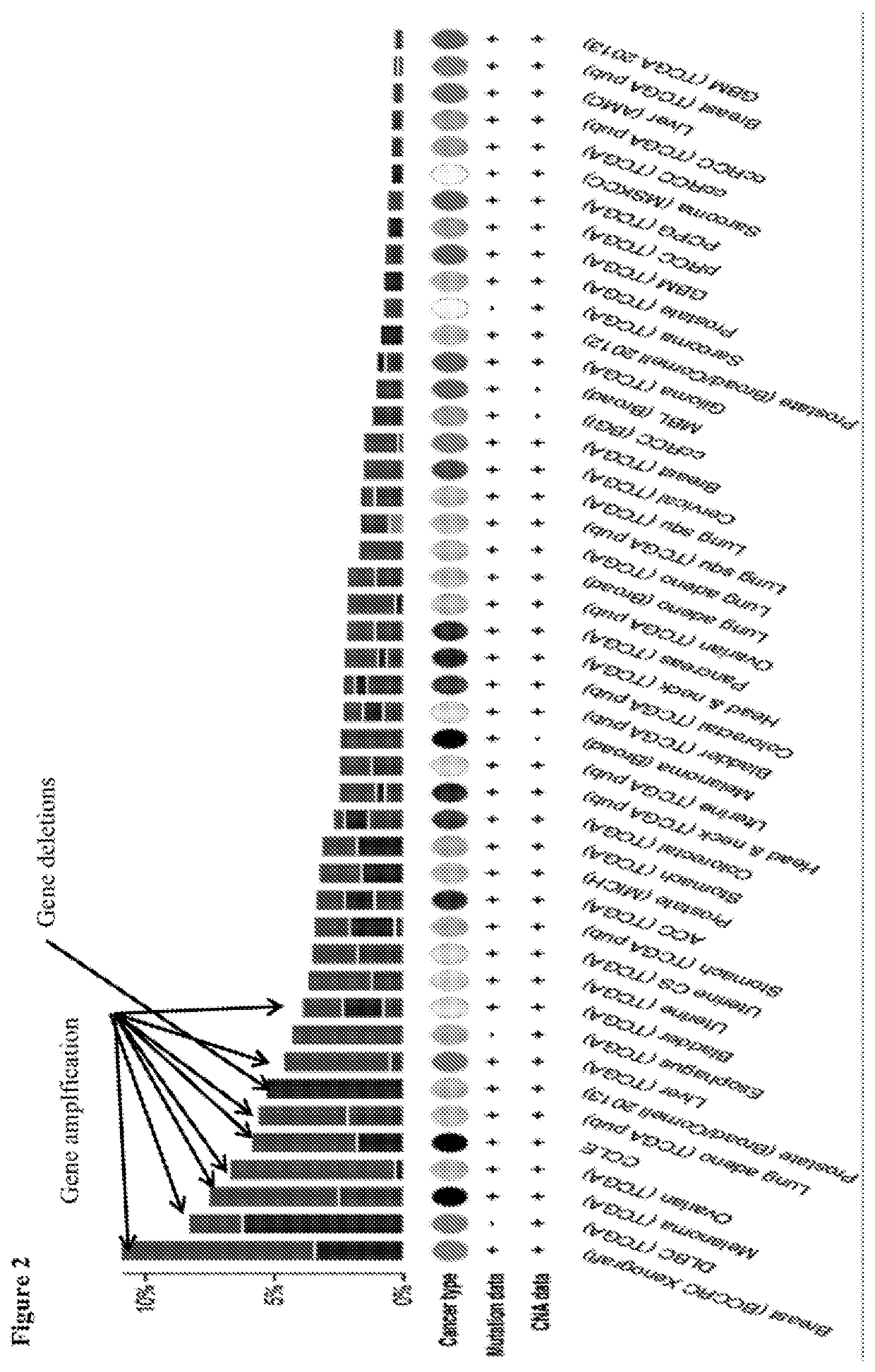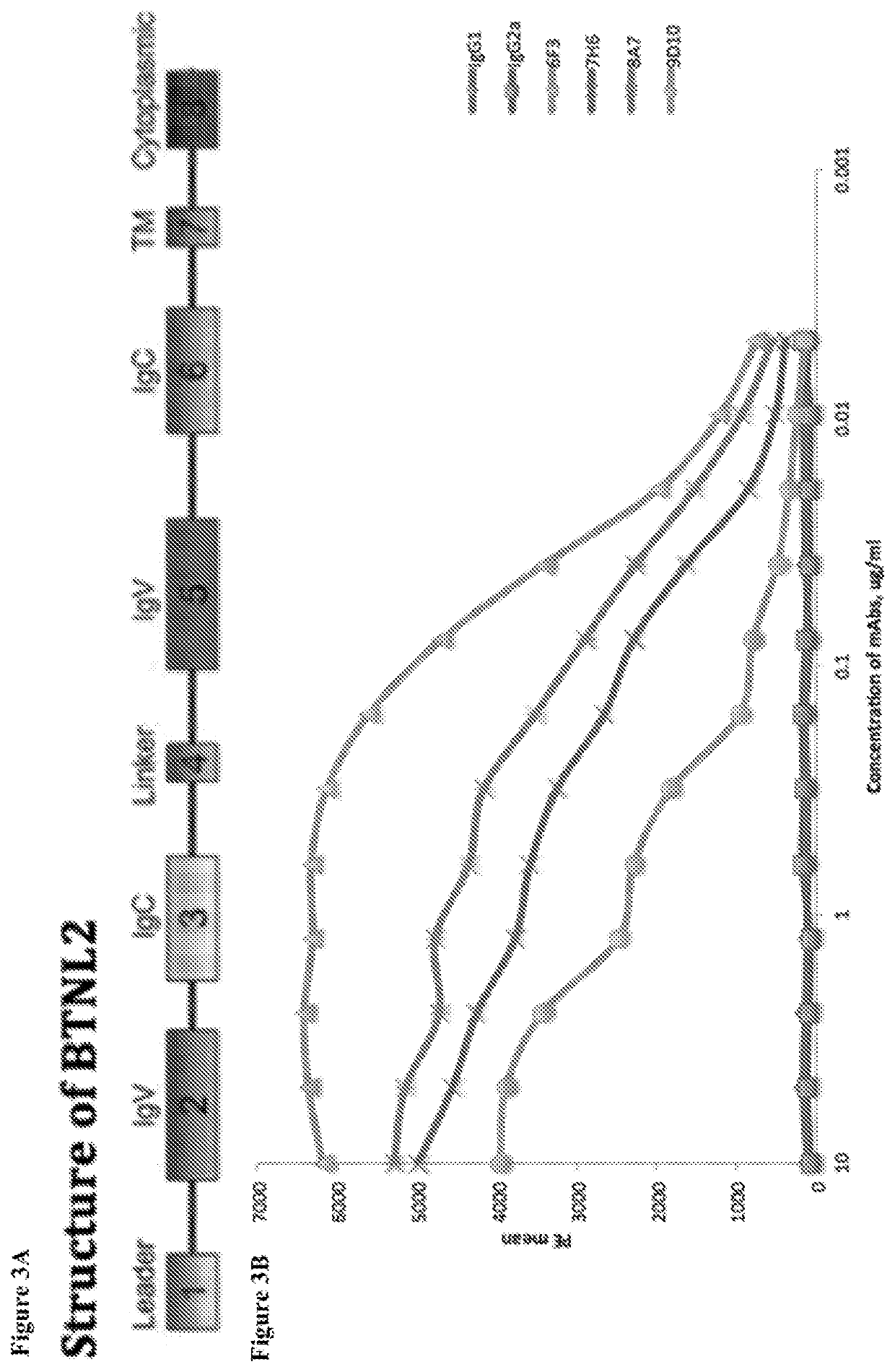Methods for treating cancer using combinations of Anti-btnl2 and immune checkpoint blockade agents
- Summary
- Abstract
- Description
- Claims
- Application Information
AI Technical Summary
Benefits of technology
Problems solved by technology
Method used
Image
Examples
example 1
and Methods for Examples 2-6
[0501]a. Mice
[0502]BALB / cJ mice were purchased from the Jackson Laboratory. Age-matched female mice were used at 6 weeks. Animal protocols were approved by The Animal Care and Use Committees at the Dana-Farber Cancer Institute (Harvard Medical School).
[0503]b. Cells and Cell Culture
[0504]Mouse colon cancer cell line CT26 was purchased from the American Type Culture Collection (ATCC). Cells were maintained in RPM1-1640 (Mediatech) media supplemented with 10% heat-inactivated FBS (Invitrogen), 1% streptomycin / penicillin, 15 μg / ml gentamicin (Invitrogen), and 1% GlutaMax® (Invitrogen) at 37° C. in a 5% CO2 incubator.
[0505]c. Antibodies
[0506]The antibodies for mBTNL2, clones 332.8A7 and 1-1A.6F3, were generated using immunization protocols described below (Belperron et al. (1999) Infect. Immun. 67:5163-5169; Boyle and Robinson (2000) DNA Cell Biol. 19:157-165; Kearney et al. (1979) J. Immunol. 123:1548-1550; Kilpatrick et al. (1997) Hybridoma 16:381-389; and ...
example 2
ression in Cancers within the Cancer Genome Atlas (TCGA)
[0524]The expression profile for BTNL2 in various cancer types were investigated using the database of TCGA (supervised by the National Cancer Institute's Center for Cancer Genomics and the National Human Genome Research Institute). As shown in FIG. 1, BTNL2 expression was seen in at least diffuse B cell lymphoma, gliobastoma, glioma, ovarian cancers, prostate cancers, thymoma cancers, uterine and renal cancers. For different types of cancer cells that were tested for BTNL2 expression, many contained BTNL2 gene amplifications (e.g., at least for breast cancer, melanoma, ovarian cancer, lung adenoviral cancer, prostate cancers, and uterine cancers), while some contained BTNL2 gene deletions (e.g., at least for diffuse large B-cell lymphoma (DLBC)) (FIG. 2). The structure of BTNL2 is shown in FIG. 3A.
example 3
2 Antibodies
[0525]A number of anti-BTNL2 monoclonal antibodies were generated and analyzed (see FIGS. 3C-3D and Table 3 below for details), including extensive analysis of two exemplary anti-BTNL2 monoclonal antibodies that were prepared in rat against mouse BTNL2 (mBTNL2). Briefly, the binding affinity of different mBTNL2 antibodies was tested on 300.19 cells expressing full-length BTNL2. IgG1 and IgG2a served as negative controls. These data show that 6F3 demonstrated the highest affinity binding, and 8A7 demonstrated the second highest affinity binding (FIG. 3B).
[0526]BTNL2 has an Igv-IgC-IgV-IgC domain structure (FIG. 3A). Thus, four binding region domains of BTNL2 are possible for antibodies to bind. In order to identify the binding region for each BTNL2 antibody, cells which express full-length BTNL2 or selected Ig domains with different antibodies were stained. Mouse pre-B cell line 300.19 cells were transfected by electroporation with full-length murine BTNL2 cDNA, murine BT...
PUM
| Property | Measurement | Unit |
|---|---|---|
| Fraction | aaaaa | aaaaa |
| Fraction | aaaaa | aaaaa |
| Density | aaaaa | aaaaa |
Abstract
Description
Claims
Application Information
 Login to View More
Login to View More - R&D
- Intellectual Property
- Life Sciences
- Materials
- Tech Scout
- Unparalleled Data Quality
- Higher Quality Content
- 60% Fewer Hallucinations
Browse by: Latest US Patents, China's latest patents, Technical Efficacy Thesaurus, Application Domain, Technology Topic, Popular Technical Reports.
© 2025 PatSnap. All rights reserved.Legal|Privacy policy|Modern Slavery Act Transparency Statement|Sitemap|About US| Contact US: help@patsnap.com



